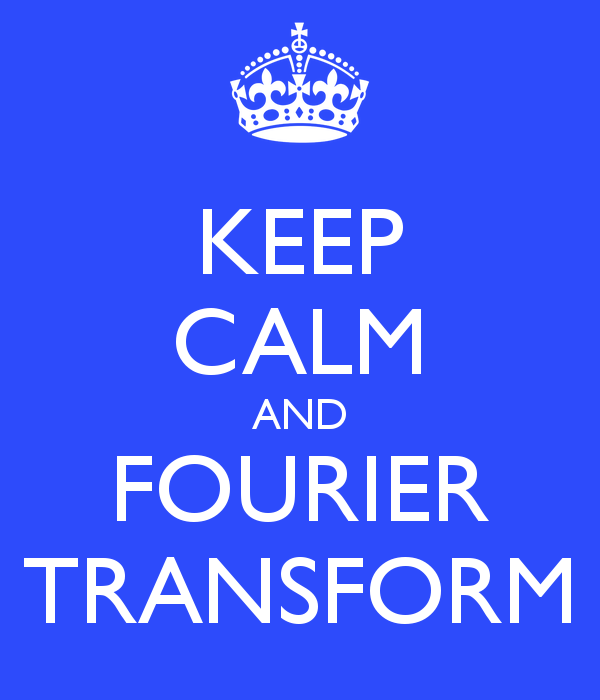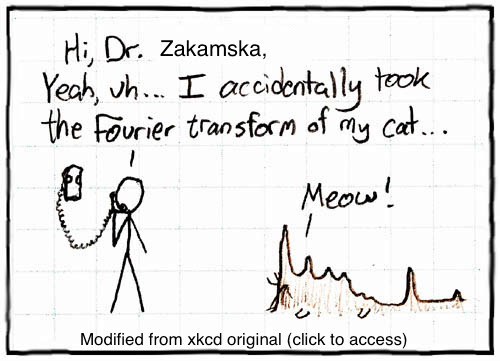| Special relativity (AS.171.207)
Waves (AS.171.201) Nadia Zakamska Fall 2020 |
| This is an old course webpage for information only, not a currently active course. Some materials have been removed in preparation for the next class. |

| Fall 2020 Remote Instruction: Frequently Asked Questions |
This course will be taught in the remote / synchronous mode. It will be very desirable to be able to attend in real time and there will be some evaluation of participation (likely multiple choice quizzes). However, it is not required to attend in real time. All meetings will be recorded, students can go over them on their own time and earn participation credit by filling out the quizzes then. This class can be taken fully synchronously, fully asynchronously or in between.
The lectures will take place at the times specified on the SIS (T/Th at 10:30). Lectures will be synchronous (meaning I will give them in real time, not pre-record), but they will be recorded and posted for later viewing.
Sections will be synchronous (1:30 pm with Tom Waddleton and 4:30 pm with Tamas Vami on Thursdays) and will be recorded. Times were selected to accommodate the maximal number of students.
Exams will be asynchronous. I will give a 24-hour window to take a 2-3 hour exam. There will be 2 midterms and a final. Exams are open book.
Office hours will be synchronous (4:00 pm with Tamas Vami on Fridays and 9:00 am with Tom Waddleton on Mondays) and will not be recorded. The office hours were selected to accommodate the maximal number of students. If unable to attend office hours, email your HW questions to both Tom and Tamas, but do not expect responses to HW questions after EOB on Monday.
Q. Where are the access codes? A. Zoom access codes will be posted in the class OneDrive folder. Gradescope code was emailed on Aug 27. If you registered after that date, email NLZ for the code.
Q. One section is full. Should I be on the shortlist? A. You should register for the section that has space. You will be able to attend the section of your choice regardless of which you are signed up for. The sections will have the same material.
Q. What's going on with the lab component of the class? A. Under normal circumstances we have 6 labs in this course. Three of these labs are easily portable to the remote mode (one involves data analysis and two can be done with numerical experiments), including the first lab in Special Relativity in the 4th week of the semester. Three remaining labs normally use a mechanical apparatus. Our Lab manager Dr. Wonnell is exploring the possibility of having remote controlled labs for this class (pretty cool!). If he succeeds and if it is not too complicated to schedule, then we will try that. I will make a decision about the labs toward the end of September and let you know.
Q. I am a freshman interested in taking the course, and I placed out of the intro sequence via Physics AP courses. A. Please email NLZ. This course is considered difficult, in part of the wide range of mathematical apparatus in use, so we need to discuss both your physics and your math preparation.
| Course information |

1. Overview
Special Relativity and Waves is the third course in the four-semester introductory sequence for physics majors. The course is divided into two parts. In the first three-four weeks we study the theory of special relativity (this is where 171.207 course ends after the first midterm and relevant homework). Then the rest of the semester is devoted to the physics of waves (for those who take the full course 171.201). The course builds upon the background in classical mechanics and electromagnetism, and precedes the full development of quantum physics. The course is calculus-based and uses differential equations, complex numbers and matrices. An introduction to complex numbers is included in the course. The use of matrices is optional but highly desired, here is a quick refresher. It is expected that you have seen simple differential equations of motion for mechanical systems and for AC circuits.
2. Lecture schedule
Instructor: Prof. Nadia Zakamska
Lectures: Tue/Thur, 10:30-11:45 am
The first lecture will be on September 1.
3. Sections and labs
The Thursday sections will be either problem-solving discussions or labs. The discussion sections have the standard duration of 0h50min, but 1h30min is allocated for the laboratory exercises, if we end up having any (TBD).
Graduate teaching assistants: Tamas Vami (Thursdays 4:30 pm), Thomas Waddleton (Thursdays 1:30 pm).
4. Grades
5% participation grade (pass/fail; pass if you log more than half of quizzes).
30% homework assignments and lab reports
30% midterms
35% final exam following Registrar's schedule which has not yet been posted
Homework and exam policy is here.
5. Textbooks
Main book for Special Relativity: N.L.Zakamska's lecture notes, available here. Please report any typos to the instructor.
Recommended book for Special Relativity: "Introduction to Special Relativity" by Resnick [NLZ: This is a classical book from the 60s. I teach the course with a more modern approach using so-called 4-vectors, which prepares you for advanced electrodynamics etc. But if you really hate linear algebra, you can master Special Relativity within the scope required for this course using Resnick's book.]
Another possible resource for Special Relativity: "Nonclassical Physics" by Randy Harris, Chapter 1, see the class OneDrive folder. [NLZ: This chapter does include some information on 4-vectors, but limited amount, and does not use the modern notation. Still, good additional reading if you need it.]
Main book for Waves: Harvard Waves course by David Morin, used with his kind permission
Recommended book for Waves: "Vibrations and Waves" (MIT intro series) by A.P.French [NLZ: I really like this book, but students have sometimes complained that it does not have enough mathematical detail. Furthermore, its availability is limited, which is why we have not adopted it as the main textbook for the class.]
6. Software and resources for the remote mode in Fall 2020
All course information will be in this OneDrive folder, JHU login is required.
Please check this folder for Zoom information for all of the instructors (will be available by Aug 31).
All course video materials, homework assignments, exam practice problems etc will be available there.
All homeworks and exams will be through Gradescope. Access code for Gradescope was circulated by email to all registered students on Aug 27. If you register after this date and did not receive the code, email NLZ for the access code.
There will likely be in-class participation quizzes through Google Surveys. Access information will be posted on OneDrive before each lecture.
Software policy (AKA what to do if technoogy goes sideways) is available here. Please be conscious of the fact that this is a large class (the largest 201/207 we have had in many years). We ask everybody for their best efforts in time management, so that the instructors have as few exceptions to deal with as possible.
7. Assignments
Weekly assignments will be posted on OneDrive and announced by email to all registered students. They will be due weekly on Tuesdays before the lecture. They will be graded by Thursdays before the section. The class is fast-paced, so staying on top of assignments is a top priority, and the instructors strive to provide timely feedback. If you are an instructor at another institution and are interested in assigments and exams for this class, please contact NLZ.

| TENTATIVE Syllabus |
Special Relativity
Sept 1. Lecture 1. Postulates of special relativity. Derivation of Lorentz transform.
Sept 3. Lecture 2. Length contraction, time dilation.
Sept 8. Lecture 3. Minkowski diagram. Simultaneous events, causally connected events. Transformation of velocity.
Sept 10. Lecture 4. Invariants and 4-vectors. Energy and momentum of particles.
Sept 15. Lecture 5. Forms of energy. Particle collisions.
Sept 17. Lecture 6. Energy and momentum of photons. Doppler effect, aberration.
Sept 22. Lecture 7. Relativistic dynamics. 2nd law of Newton in relativistic case in E&M fields.
Sept 24. Lecture 8. Relativistic particles in electric and magnetic fields.
Waves and Oscillations: Expansion of potential near minimum. Simple Harmonic oscillator.
Sept 29. Lecture 9. Damped harmonic oscillator. Complex numbers. (Morin Chapter 1.)
Oct 1. Lecture 10. Driven harmonic oscillator. Resonance curve.
Oct 6. Midterm 1 -- Special Relativity -- TENTATIVE DATE
Oct 8. Lecture 11. Beats. Coupled oscillations: two, three masses (Morin chapter 2).
Oct 13. Lecture 12. Longitudinal vs transverse oscillations (Morin chapter 4.1). Normal modes (Morin chapter 2).
Oct 15. Lecture 13. Coupled oscillations: N masses.
Oct 20. Lecture 14. Discrete real Fourier series (Morin chapter 3) for functions defined on an interval. Oscillations of strings fixed at both ends.
Oct 22-23 Fall break
Oct 27. Lecture 15. Fourier series for periodic functions. Discrete complex Fourier series. Response of RLC circuits to periodic voltage.
Oct 29. Lecture 16. Fourier transforms. Response of RLC circuits to arbitrary voltage.
Nov 3. Lecture 17. Delta function. Relationship between Fourier transforms and Fourier series. Aliasing, strobe effect, Nyquist theorem.
Nov 5. Lecture 18. Wave equation. Standing vs traveling waves (Morin chapter 4.2).
Nov 10. Midterm 2 -- TENTATIVE DATE on everything up to and including Lecture 18.
Nov 12. Lecture 19. Reflection and transmission. Impedance. Energy and momentum of waves (Morin Ch 4). Attenuation (Morin Ch 4).
Nov 17. Lecture 20. Sound waves (Morin Ch 5). Euler and continuity equations. Sound speed in solids and gasses. Energy of the sound.
Nov 19. Lecture 21. Non-relativistic Doppler effect. Musical instruments. Fixed and open boundary conditions. Amplitude of 2D and 3D waves. Dispersion (Morin Chapter 6). Wave packets, group velocity, phase velocity.
Nov 23 - Nov 27 -- Thanksgiving break
Dec 1. Lecture 22. Dispersion: Break-down of the wave approximation, high-frequency cut-off, dispersion relation, evanescent waves, penetration length, example problems.
Dec 3. Lecture 23. Boundary effects and interference (Morin Chapter 9). 2D and 3D wave equation. Huygens - Fresnel principle. Reflection and refraction. Snell's law. Double-slit interference.
Dec 8. Lecture 24. Multi-slit interference. Single-slit diffraction. Single-slit effects in interference. Diffraction limit in astronomical instrumentation.
| Learning goals |
By the end of this course, the students will be able to:
-- Solve standard problems in Special Relativity up to and including relativistic dynamics and apply 4-vector formalism;
-- Apply advanced mathematical apparatus (differential equations, Fourier analysis, complex numbers) to solve problems on waves and oscillations in physical systems drawn from the introductory sequence on mechanics and electromagnetism;
-- Recognize complex wave phenomena, such as dispersion, diffraction and interference, and analyze them in idealized contexts.